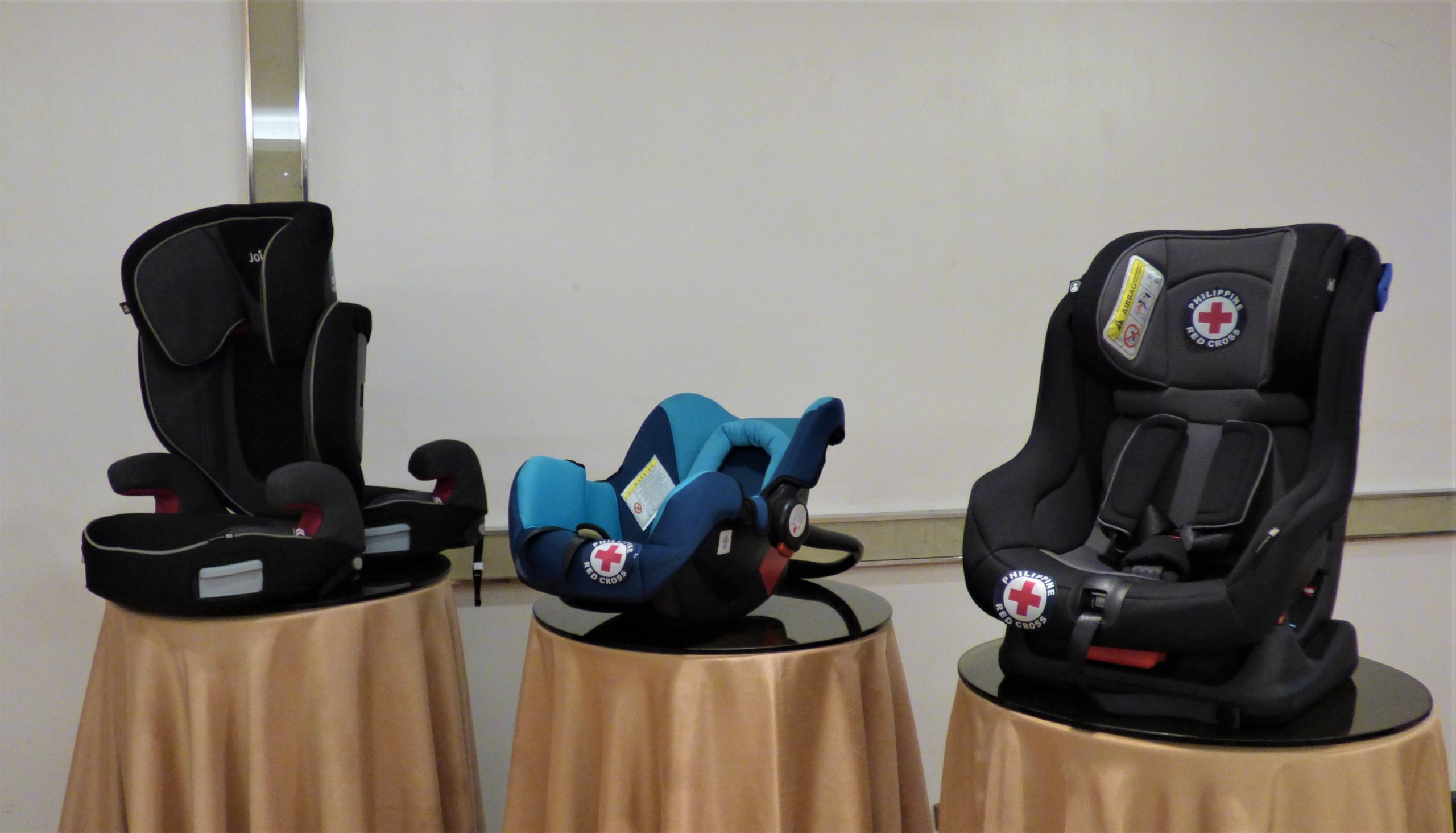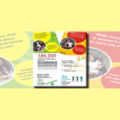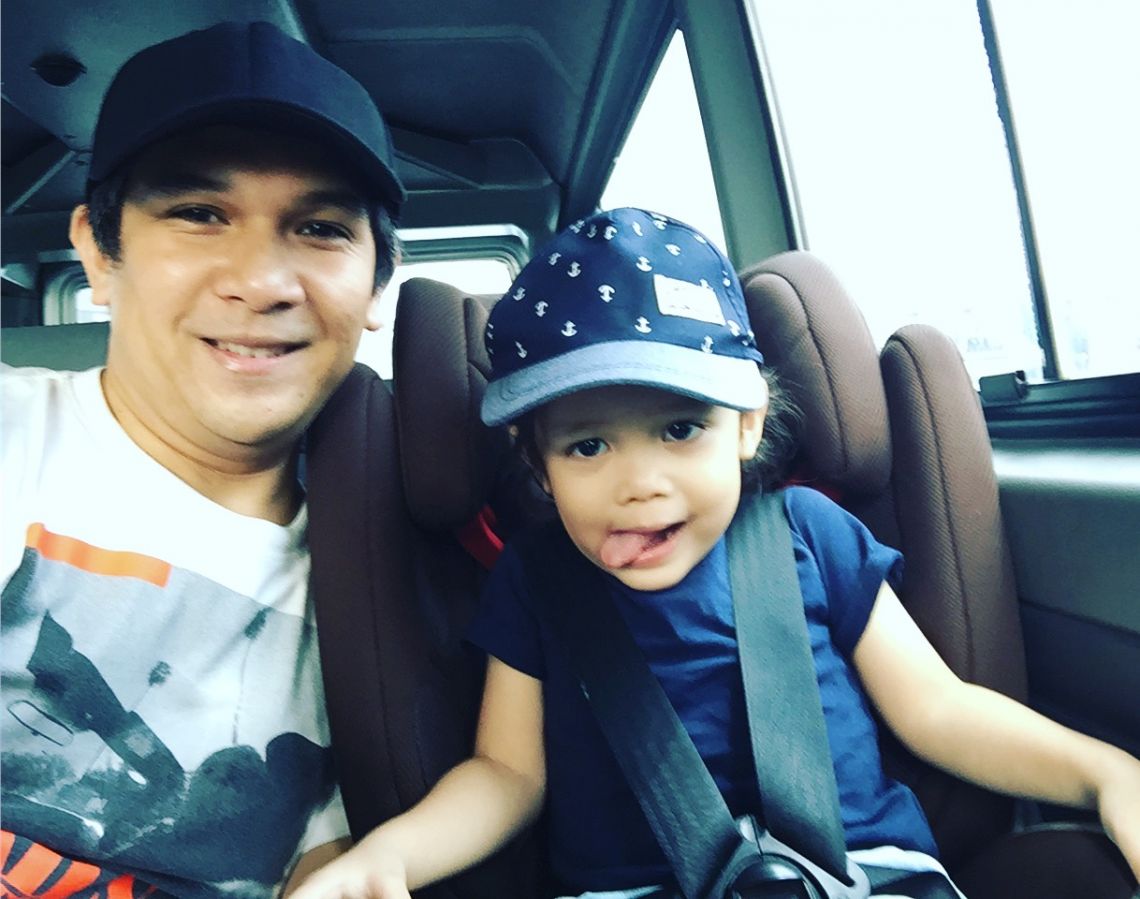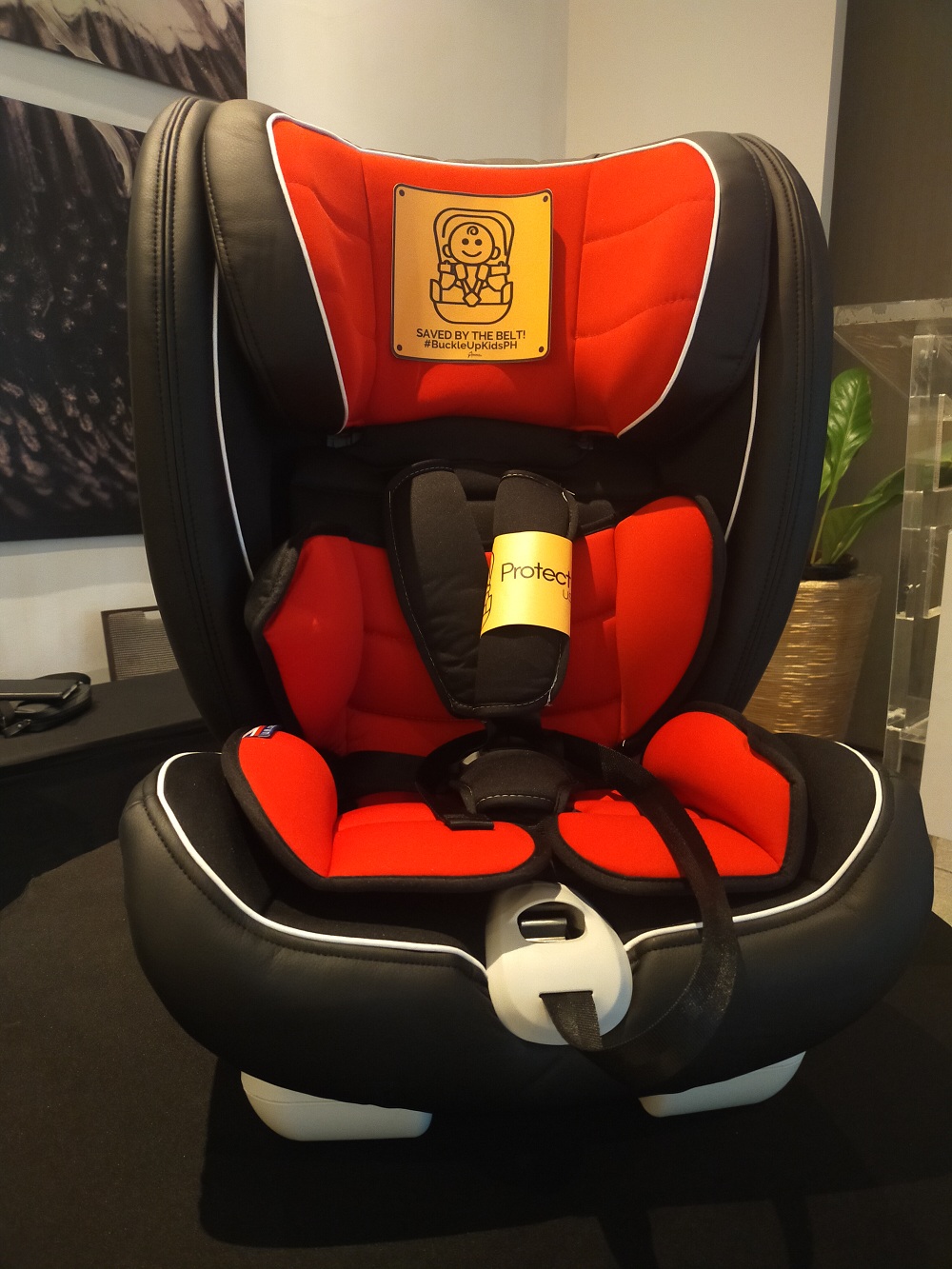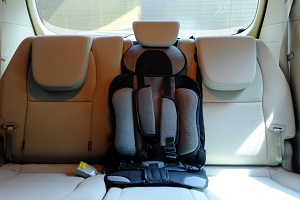
One of the most popular car seats available online isn’t actually a car seat. Contrary to what its name might suggest, the “Baby Car Safety Seat Child Cushion Carrier” won’t be able to do much to keep a child safe in a collision.
Priced at under Php 500.00 (exclusive of shipping fees), the safety seat, at face value, seems to tick all the right boxes. It secures toddlers in with a five-point harness system: Two straps go over the shoulders while two more wrap around each of the child’s hip. They meet in a padded junction positioned over the pelvis, connected by a final strap that passes in between the legs.
Coupled with just the right amount of padding behind the head and at the flank, the car seat appears to be safe enough.
Customers, in response, eat all of this up. In the first 2 weeks of September alone, at least 150 similar products were bought on the online shopping platform Lazada, and reviews are overwhelmingly glowing. The very few one- or two-star reviews complain of delays in delivery or inflated shipping fees. Safety questions are very rarely raised, if at all.
Atty. Evita Ricafort, Policy Adviser and a Founding Trustee of ImagineLaw, finds this alarming. “What is this? A placemat? It just looks like a cover that you can sit the child on.”
Her concerns aren’t baseless. The car seat in question is flimsy: it’s made mostly of mesh fabric, completely lacks a hard-plastic outer shell, and has no metal reinforcements. Online, its display photo shows a product that appears strong and well-manufactured, but in reality, its actual make is disappointing.
Ricafort laments that, sadly, there’s still a disconnect in terms of how Filipinos think of road safety for children. Some, she expects, will be frustrated at how the new law will mean additional costs for them, while others will choose the cheapest, least safe car seat option, just so they aren’t in violation of the law.
“They forget … that the state, the government, the law is not trying to punish you for not having a car seat. It’s imposing it as a requirement because it wants to help you change your behavior so you can keep your children safe aboard these vehicles,” she adds. “The point is that you don’t want your child to die.”
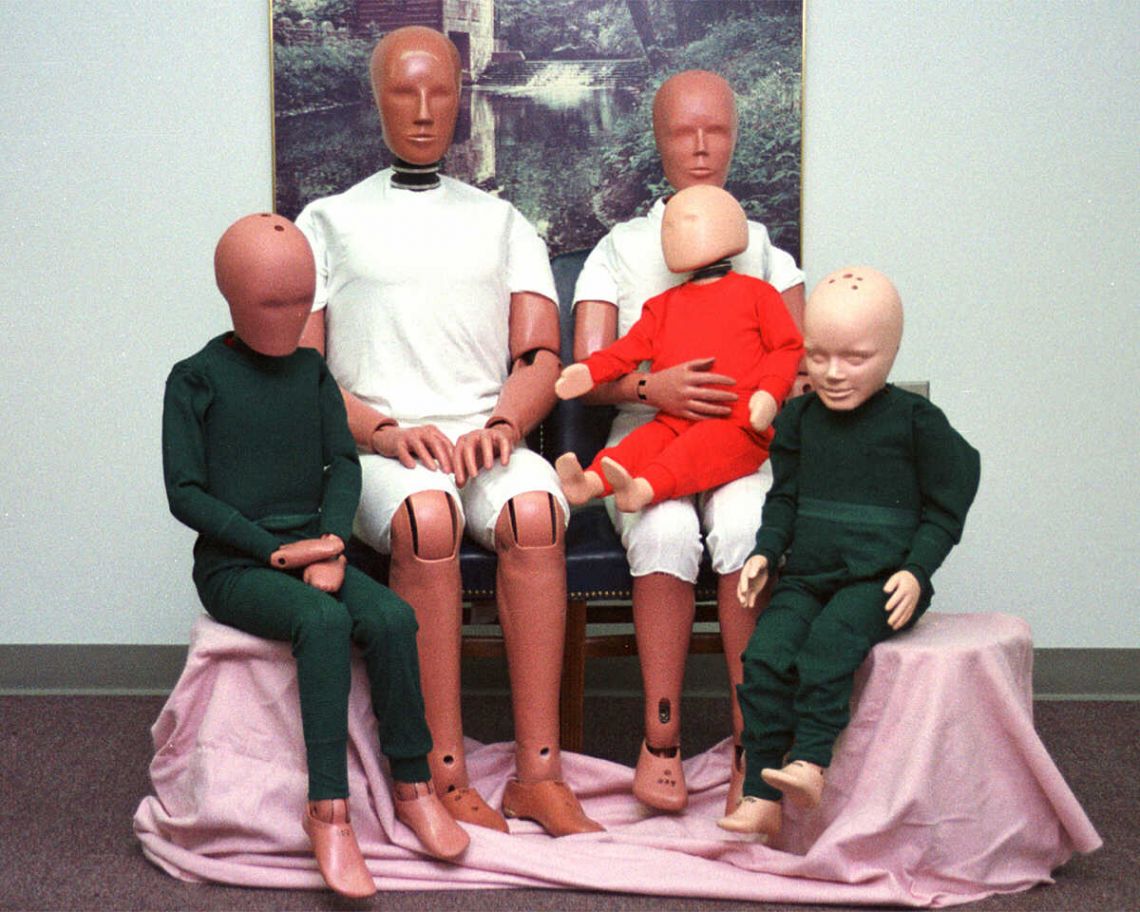

Child restraint systems should, by design, have some heft. Their ultimate purpose is to keep a child safe during a car crash. That means car seats should be able either to boost toddlers up, compensating for their short stature so they can wear adult seatbelts, or to cushion babies, protecting their weak bones and muscles from the force of the impact.
Because they fulfill such a crucial role in road safety, car seats are held to prohibitively high standards. In the 44th Regulation of its 1958 Agreement regarding the uniformity of prescriptions for wheeled vehicles, the UN Economic Commission for Europe (UNECE) outlines in specific and highly technical detail how car seats should be tested and how the generated results should be evaluated. Most important of these assessments is the crash test.
Held in huge, sprawling laboratories, crash tests make use of anthropometric dummies that, as closely as possible, mimic the shape and size of a child’s body. Following the manufacturer’s prescriptions, the dummy is tucked into the car seat, which is, in turn, attached to a waiting vehicle. Once everything is ready, the car is set in motion.
The car is fitted with an accelerating device that ramps up its speed as it drives through a run-up track. As it reaches a velocity of at least 50 kph, the accelerating device disengages and the car slams headlong into a thick concrete barrier.
During the crash, as forces of the collision reverberate throughout the vehicle, none of the car seat’s buckles and locking systems should release, and none of the parts that actually hold the child in place should break. At the same time, the dummy should not jerk so forcefully that it is thrown far from its original position and hit any part of the car. And, as the car seat tries to restrain the dummy, its harnesses shouldn’t push in too hard so as to cause any deformities on the body.
Equivalent tests are carried out for rear-end collisions and, as per the updated UNECE Regulation 129, for side-impact collisions.
Car seats also have to prove themselves in less dynamic tests. The metal parts, for instance, should not show any visible signs of corrosion after being exposed to a salt solution for 24 hours. The straps, on the other hand, should be able to withstand cold, hot and wet environments without losing integrity. Buckles need to be able to release reliably whether under tension or not.
All of these tests are performed under rigorous, tightly monitored conditions. Measurements are made using advanced instruments, technicians are highly trained and capable, and results are recorded exactly to the unit. To pass, car seats need to be well-made, manufactured with high-grade materials and technical expertise.
The Baby Car Safety Seat Child Cushion Carrier clearly falls short of these standards. After all, if a quick, forceful tug is enough to undo a couple of stitches, a high-impact collision is going to rip this knockoff car seat to shreds.
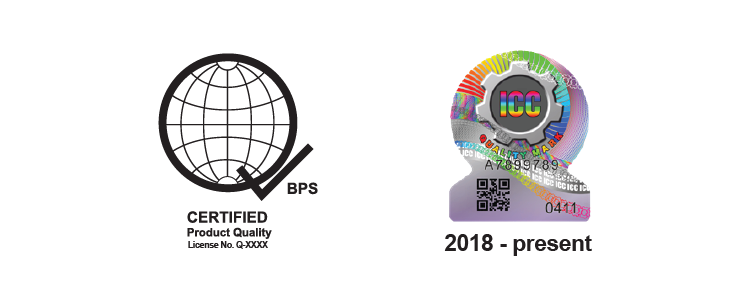
Philippine Standards and Import Commodity Clearance marks. Source: Bureau of Product Standards, Department of Trade and Industry (http://www.bps.dti.gov.ph/index.php/product-certif…n/ps-and-icc-marks).
It’s not difficult to imagine what the consequences will be of a market saturated with dirt-cheap, substandard child restraint systems. And, once Republic Act 11229 (or the Child Safety in Motor Vehicles Act) comes into force and the demand for affordable car seats swells, this is bound to become a bigger problem.
Fortunately, this is something that the Department of Trade and Industry (DTI) is aware of and has taken elaborate steps to address.
“The Bureau of Product Standards (BPS), within 6 months after the effectivity of the law’s implementing rules and regulations (IRR), is supposed to issue a technical regulation,” explained Engr John Steven Magboo, Product Certification Officer at the Standards Conformity Division of the BPS. This is a document that will outline how the Bureau plans to certify child restraint systems, the requirements it will look for, and the mechanisms it needs to establish.
“Once that’s out, the DTI will have two processes in place,” he continued.
Car seat manufacturers have the option to apply for the Philippine Standard (PS) mark license. Under this scheme, the DTI will send a representative to conduct a factory audit of the company. Products under application will have to go through the appropriate tests, in accordance with Philippine National Standards. As per the new car seat law, the Philippines will adhere to the quality standards set by the UNECE and other equivalent or better international standards.
“If there are no issues during the factory audit and the product passes independent testing, then it will be issued the Philippine Standard license, which is valid for 3 years, subject to annual surveillance audit,” Magboo says.
However, importers and other sellers, especially those who conduct their trade online, are ineligible for the PS license. These businesses will instead need to secure Import Commodity Clearance (ICC) certificates for their products. Every time a shipment comes in, officials will screen the car seats to make sure that their brands, models, and quantities are as declared.
Importers also have to present the results of product quality tests, proving that their car seats are not substandard. “Since as of this time, we have no capability to conduct product testing, since there are no testing laboratories in the Philippines, … we will accept foreign test results,” as long as experiments were conducted by accredited labs, says Magboo. Once cleared, the importers will be issued ICC stickers, which they can then stick on the car seats.
The ICC stickers and PS labels, in this way, also act as the consumers’ guarantee that they aren’t being short-changed.
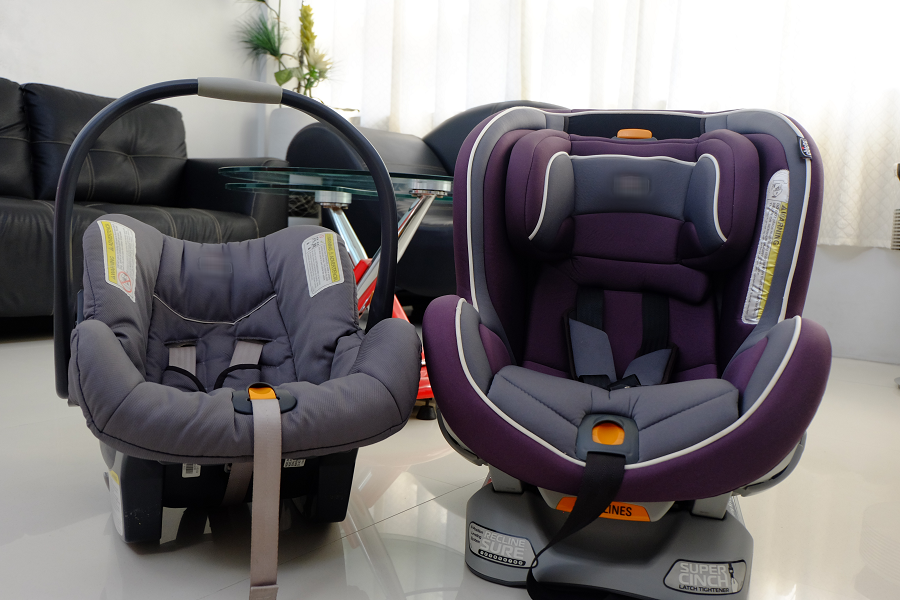
Child restraint systems
Reliable as they may be, the DTI’s mechanisms for certifying car seats will only kick in once the new law does, a year after its IRR is finalized and published. In the interim, the market will remain wide open for substandard products, threatening the safety of children on the road.
According to Engr. Mario Gaudiano, head of the Standards Development division of the DTI, the responsibility to prevent this falls squarely on the consumers. He invokes a concept called caveat emptor, “which means buyer beware.” Buyers, essentially, are urged to exercise maximum caution and be as discerning as possible when making purchase.
In particular, Gaudiano recommends that consumers, at least until the law comes into force, opt for legitimate and established car seat companies; those with names to protect. It may be steep, but absent any strict certification, screening, and surveillance machinery by the government, there’s not much else that consumers can do to protect themselves.
“In the meantime, [let’s live by] caveat emptor,” he says. “What that means is we need the cooperation of the consumers. If the product [requires certification] under specific government agencies, ask for that certification; ask for a license. Just so they don’t have regrets in the end.
This story, which first appeared on FlipScience, was produced under the Road Safety Journalism Fellowship carried out by VERA Files and the World Health Organization under the Bloomberg Initiative for Global Road Safety.

